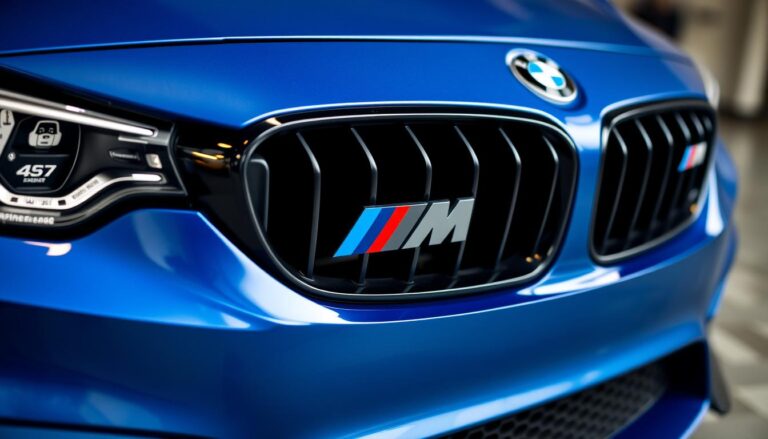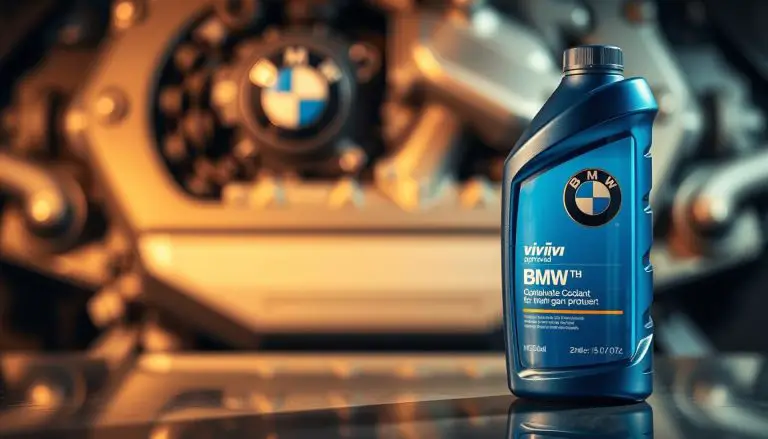The BMW 7 Series, a paragon of luxury sedans, has consistently set the standard for opulence, performance, and technological advancements since its inception. Through successive generations, it has undergone significant transformations, each iteration introducing novel features and enhancements.
Yet, not all model years are equally esteemed, with certain years standing out for their reliability and desirability. This discourse seeks to elucidate the best and worst BMW 7 Series years, guiding prospective buyers in their decision-making process.
Key Takeaways
- Understanding the reliability of different BMW 7 Series model years.
- Identifying the best years to buy a used BMW 7 Series.
- Recognizing the worst model years to avoid.
- Factors to consider when purchasing a BMW 7 Series.
- Tips for maintaining and servicing your BMW 7 Series.
BMW7 Series: A Legacy of Luxury
The BMW 7 Series, with a history spanning over four decades, has solidified its position as a vanguard in the luxury automotive sector. Since its inception, it has epitomized the quintessence of luxury sedans, seamlessly merging performance, cutting-edge technology, and opulent amenities.
Evolution Through Seven Generations
Throughout its seven generations, the BMW 7 Series has undergone profound transformations, each generation heralding advancements in design, technology, and performance. From the inaugural E23 model in 1977 to the current G11/G12 iteration, the series has consistently adapted to the evolving demands of the luxury automobile market.
Key Innovations by Generation
Each iteration of the BMW 7 Series has introduced pivotal innovations, cementing its status as a luxury leader. Noteworthy advancements include:
- Anti-lock Braking System (ABS): Introduced in the E32 generation, ABS significantly improved safety.
- iDrive Infotainment System: Introduced in the E65/E66 generation, iDrive revolutionized the in-car entertainment and information system.
- Advanced Driver Assistance Systems (ADAS): Modern generations have seen the integration of ADAS, enhancing safety and convenience.
The evolution of the 7 Series transcends mere technological advancements; it encompasses design and performance enhancements as well. The series has witnessed notable improvements in engine power, aerodynamics, and interior luxury.

The 7 Series Position in BMW’s Lineup
The BMW 7 Series serves as the flagship model within BMW’s lineup, embodying the zenith of luxury and performance. It directly competes with other luxury sedans, including the Mercedes-Benz S-Class and Audi A8.
| Generation | Years | Notable Features |
|---|---|---|
| E23 | 1977-1986 | First generation, introduced ABS |
| E32 | 1986-1994 | Introduced V12 engine, improved aerodynamics |
| G11/G12 | 2015-present | Current generation, features advanced ADAS and luxury amenities |
This table encapsulates the significant milestones in the evolution of the BMW 7 Series, illustrating its progression as a luxury vehicle.
Methodology: How We Determined the Best and Worst BMW7 Series Years
The evaluation of BMW 7 Series years was predicated upon a meticulous analysis of reliability, owner satisfaction, and maintenance costs. This comprehensive examination allowed us to discern patterns and trends, thus elucidating the merits and demerits of various model years.
Our methodology aimed to deliver a balanced evaluation, mirroring real-world performance and owner experiences. Such an approach ensures that our assessment is both informative and pertinent to prospective buyers.
Reliability Data Sources
To gauge the reliability of BMW 7 Series models, we consulted multiple authoritative sources, including:
- Reliability surveys from automotive research firms
- Owner reports and reviews
- Warranty Direct’s reliability data
These sources offered insights into the prevalence and gravity of issues reported by owners, enabling us to assess the overall reliability of each model year.

Owner Satisfaction Metrics
Owner satisfaction serves as a critical indicator of a vehicle’s performance and overall quality. We scrutinized owner satisfaction through:
- Surveys conducted by automotive research organizations
- Online reviews and forums where owners share their experiences
By examining these metrics, we gained a deeper understanding of how owners perceive their BMW 7 Series vehicles, highlighting areas of strength and weakness.
Maintenance Cost Analysis
Maintenance costs can significantly impact the total cost of ownership. We analyzed data from various sources to determine the average maintenance costs for different model years, including:
| Model Year | Average Maintenance Cost |
|---|---|
| 2001-2003 | $800 |
| 2009-2010 | $1,200 |
| 2017-2019 | $900 |
This analysis revealed significant variations in maintenance costs across different model years, providing valuable insights for potential buyers.
Best and Worst BMW7 Series Years: Overview
Reliability trends across different generations of the BMW7 Series reveal that some years are more prone to issues than others. This insight is crucial for potential buyers looking to avoid problematic models.
The BMW7 Series, renowned for its luxury and performance, has experienced varied reliability trends across its generations. Understanding these trends is essential for buyers aiming to make informed decisions.
Reliability Trends Across Generations
The reliability of the BMW7 Series has shown significant variation across its generations. Some model years have been marred by issues, while others have distinguished themselves for their reliability.
Key factors influencing reliability include:
- Technological advancements
- Production year challenges
- Maintenance and servicing
As noted by industry experts,
“First-year production models often come with unforeseen issues that can impact their reliability.”
This underscores the significance of considering the production year when evaluating a used BMW7 Series.
The Impact of First-Year Production
First-year production models can be notably problematic due to the challenges associated with introducing new technologies or design changes. Buyers should exercise caution when considering these models.
For instance, the introduction of new infotainment systems or advanced driver assistance features can sometimes lead to reliability issues in the first year of production.
By grasping the reliability trends across different generations and being mindful of the potential issues with first-year production models, buyers can make more informed decisions when purchasing a used BMW7 Series.
The Best BMW7 Series Years to Buy
For those seeking a used BMW 7 Series, discerning the optimal model years is paramount for a fulfilling ownership journey. Certain epochs emerge as exemplary due to their steadfast reliability, superior performance, and opulent features.
2001-2003 E38 Models: The Last Analog Luxury
The 2001-2003 E38 models are celebrated for their analog luxury experience. They present a rare amalgamation of comfort and driving prowess, attributes increasingly elusive in contemporary vehicles.
Standout Features and Reliability
The E38 models are lauded for their reliable performance and luxurious interior. They boast of comfortable seating, state-of-the-art audio systems, and a silky ride.
2011-2012 F01/F02 Models: Refined Reliability
The 2011-2012 F01/F02 models introduced refined reliability to the BMW 7 Series family. These models rectified some of the reliability issues of their antecedents.
Key Improvements Over Previous Generation
Noteworthy enhancements in the F01/F02 models include enhanced engine performance and advanced safety features. These models also boasted improved fuel efficiency and diminished maintenance expenses.
2017-2019 G11/G12 Models: Modern Excellence
The 2017-2019 G11/G12 models epitomize modern excellence in the BMW 7 Series. They present cutting-edge technology, unparalleled performance, and refined luxury.
Technology and Performance Highlights
These models are equipped with advanced driver assistance systems, high-performance engine options, and sumptuous interior amenities. The G11/G12 models signify the zenith of BMW’s engineering and design prowess.
The Worst BMW7 Series Years to Avoid
Not all BMW 7 Series models are created equal; some years are plagued by significant issues that can lead to costly ownership experiences. When considering a used BMW 7 Series, it’s essential to be aware of the model years that are best avoided.
2002-2008 E65/E66 Models: Technological Troubles
The E65/E66 generation, produced from 2002 to 2008, was marked by a series of technological advancements that, while innovative, often led to reliability issues. One of the most significant problems was with the iDrive system.
iDrive System and Electronic Failures
The iDrive system, introduced in the E65/E66 models, was criticized for its complexity and propensity for failure. Owners reported issues ranging from navigation system glitches to complete system crashes, often requiring costly repairs.
2009-2010 F01 Models: First-Year Flaws
The F01 generation, launched in 2009, brought significant updates to the 7 Series lineup. The first-year models (2009-2010) were not without their issues, experiencing a number of recalls and defects.
Common Defects and Recalls
Early F01 models were plagued by issues such as faulty fuel pumps, problematic electronics, and transmission issues. These problems led to several recalls, highlighting the challenges faced by early adopters of this new generation.
2013-2015 F01/F02 Facelift: Unexpected Issues
The facelifted F01/F02 models, produced from 2013 to 2015, were expected to address many of the issues of their predecessors. They introduced new challenges, notably with engine and transmission problems.
Engine and Transmission Problems
Some owners of the 2013-2015 F01/F02 models reported issues with engine misfires, oil leaks, and transmission hesitation. These problems, while not universal, were significant enough to be a concern for potential buyers.
Buying Guide: What to Look for in a Used BMW7 Series
When contemplating the acquisition of a used BMW 7 Series, a comprehensive evaluation is imperative. This entails scrutinizing the vehicle’s state, its historical context, and its potential for enduring reliability.
Pre-Purchase Inspection Checklist
A meticulous pre-purchase inspection is indispensable when considering a used BMW 7 Series. This entails a detailed examination of the vehicle’s exterior and interior condition, its engine performance, and its electronic systems.
- Inspect for any signs of wear on the exterior and interior.
- Assess engine performance and scrutinize for any error messages.
- Operate all electronic features, encompassing infotainment and navigation systems.
Maintenance History Importance
The significance of a used BMW 7 Series’s maintenance history cannot be overstated. It serves as a beacon, illuminating potential issues and affirming the vehicle’s upkeep.
| Maintenance Item | Importance Level | Recommended Interval |
|---|---|---|
| Oil Change | High | Every 5,000 to 7,500 miles |
| Tire Rotation | Medium | Every 6,000 to 8,000 miles |
| Brake Pad Replacement | High | Every 30,000 to 50,000 miles |
Aftermarket Warranty Considerations
An aftermarket warranty can offer solace when acquiring a used BMW 7 Series. It safeguards against unforeseen repair expenditures.
In assessing aftermarket warranty options, prioritize providers that offer extensive coverage and possess a commendable reputation.
Resale Value and Depreciation Factors
An understanding of resale value and depreciation factors is crucial for a judicious investment. The BMW 7 Series generally retains its value, albeit certain models and years exhibit less depreciation.
By meticulously weighing these considerations and conducting exhaustive research, buyers can procure a dependable and opulent used BMW 7 Series that fulfills their requirements.
Conclusion
Grasping the nuances between the most exemplary and the most challenging BMW7 Series years is paramount for prospective buyers of luxury sedans. This understanding allows for a more informed decision-making process, navigating the intricate landscape of the BMW7 Series. By dissecting reliability trends and performance attributes across different generations, consumers can make more astute choices.
The data compiled in this article underscores the significance of scrutinizing model year, generation, and maintenance history in assessing a BMW7 Series’s reliability. Whether your affinity lies with the timeless allure of vintage models or the advanced technology of contemporary ones, there exists a BMW7 Series that aligns with your preferences and requirements.
In the quest for the perfect BMW7 Series, it is imperative to be cognizant of the potential drawbacks associated with specific model years. This awareness enables the avoidance of common pitfalls, thus ensuring a gratifying ownership experience. Armed with the knowledge derived from this article, you will be more adept at identifying a dependable BMW7 Series that fulfills your expectations.
FAQ
What are the most reliable BMW 7 Series model years?
The 2001-2003 E38 models, 2011-2012 F01/F02 models, and 2017-2019 G11/G12 models are regarded as the pinnacle of reliability. They seamlessly merge luxury with performance, making them a preferred choice for many.
Which BMW 7 Series models should I avoid?
It is advisable to steer clear of the 2002-2008 E65/E66, 2009-2010 F01, and 2013-2015 F01/F02 facelift models. These are marred by issues such as iDrive system malfunctions, electronic failures, and first-year production defects. They also suffer from engine and transmission problems, rendering them less desirable.
What should I look for when buying a used BMW 7 Series?
Prior to purchasing a used BMW 7 Series, a comprehensive pre-purchase inspection is imperative. Reviewing the vehicle’s maintenance history is also crucial. Consider the availability of aftermarket warranties and the implications of depreciation on resale value.
Are older BMW 7 Series models still worth considering?
Older models, such as the 2001-2003 E38, offer a unique analog luxury experience and are often associated with lower maintenance costs. Despite potential issues, they can be a viable option for those seeking a more traditional driving experience, provided one is aware of the necessary maintenance expenses.
How do I minimize the risk of buying a problematic BMW 7 Series?
To mitigate risks, it is essential to conduct thorough research on the model’s history. Consult reliability and satisfaction ratings, review maintenance records, and consider a mechanic’s inspection before finalizing a purchase.
What are some common issues with the BMW 7 Series?
Common afflictions include iDrive system malfunctions, electronic failures, and engine and transmission problems. These issues can vary across different model years and generations, underscoring the importance of model-specific research.
Can I still get a warranty on a used BMW 7 Series?
Yes, aftermarket warranties are available for used BMW 7 Series models. These warranties offer additional peace of mind and protection against unforeseen repair costs, enhancing the overall ownership experience.


